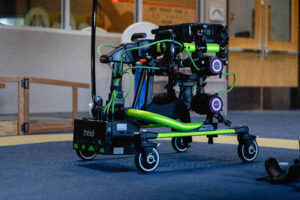Early Signs of Cerebral Palsy
Cerebral Palsy can be detected and diagnosed at different times in a child’s life. Quite often when a child misses a milestone, the parents become aware of an issue and take the child for an assessment.
It can be difficult to determine what is an early sign of Cerebral Palsy, since there the signs vary significantly due to different types and levels of disability. Typically signs will be related to motor skills and mobility.
The biggest signal that your child might have CP is a delay in reaching motor or movement milestones. Things like rolling over, sitting, standing, or walking.
Below are some other signs that your child might have CP. Please note that a child without Cerebral Palsy may display some of these signs too. If you see any of these signs in your child, speak with a doctor to determine if it is CP.
A Baby Younger Than Six Months:
- The baby’s head lags when you pick them up while lying on their back
- They feel stiff
- They feel floppy
- When held cradled in your arms, they seem to overextend their back and neck, acting as if they are pushing away from you
- When you pick them up,their legs get stiff and they cross or scissor
- Excessive drooling
A Baby Older Than Six Months:
- They don’t roll over in either direction
- They cannot bring their hands together
- They have difficulty bringing their hands to their mouth
- They reach out with only one hand while keeping the other fisted
A Baby Older Than 10 Months:
- When crawling, they push off with one hand and leg while dragging the opposite hand and leg
- They scoots around on their bottom or hop on their knees, but don’t crawl on all fours
- The have trouble clapping or grasping objects
Even if it is not visible in a newborn, there may be brain damage that impacts development, if there was a birth injury. Learn more about HIE, a birth injury that can cause Cerebral Palsy.
If there is reason to believe the child was deprived of oxygen due to a birth injury, it is important to discuss this with the doctor and determine if a brain cooling treatment may help your child.
According to a study from the Centers for Disease Control and Prevention (CDC), 41% of children with Cerebral Palsy had limited ability to crawl, walk, run, or play. About 31% needed to use special equipment such as walkers or wheelchairs.
The Trexo Home device is a viable and effective solution for the 31% that have severe mobility issues. Learn more about the Trexo now.

